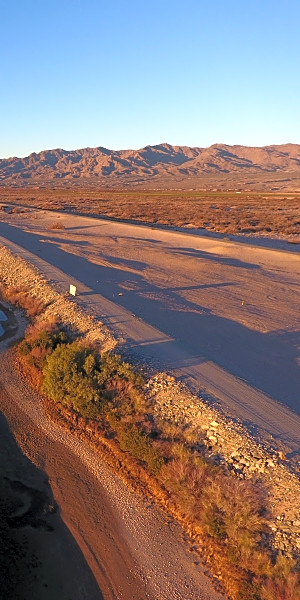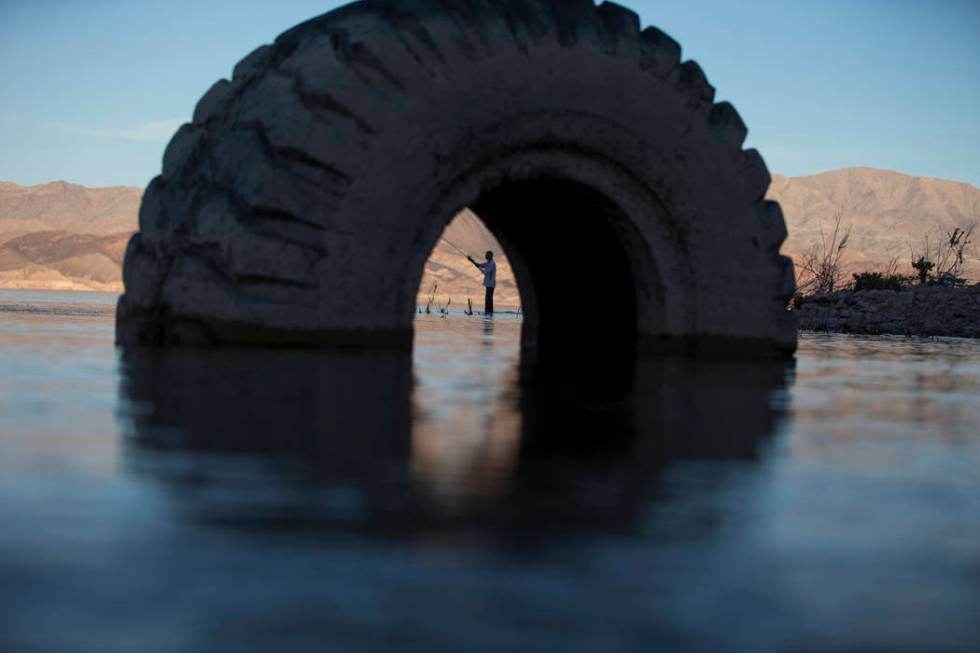PART 1: ‘Water Question’ series looks at how long Colorado River can sustain us

PART 1: ‘Water Question’ series looks at how long Colorado River can sustain us

he question comes up with every dire media report or bleak new forecast about the Colorado River: How much longer can Nevada’s largest community continue to rely on a single source of water to power its prosperity?
It’s an important question, maybe the most important.
No Southwestern state gets less water from the river than Nevada.
No major city depends on that water more than Las Vegas.
But the Colorado is in trouble.
Twenty years of record drought in the mountains that feed the overtaxed river have sapped its flow and sent its two largest reservoirs into free fall.
States that rely on the river for their water supplies now face a federal deadline of March 19 to submit plans to voluntarily reduce their use ahead of an unprecedented shortage declaration expected this year — one that would mandate additional cuts designed to keep Lake Mead from crashing.
The stakes could not be higher for Southern Nevada or the state as a whole. The Las Vegas Valley holds the pulsing heart of the state’s largest industry, tourism. Nearly three-quarters of Nevadans live there. None of that is possible without Lake Mead and the Colorado River, the source for 90 percent of the community’s water supply.
“Whatever the engines of the economy are, water is the fuel that they all run on, and they can’t run without it,” said Doug Bennett, conservation manager for the Southern Nevada Water Authority.
At this critical moment, the Las Vegas Review-Journal is taking an in-depth look at the state of the river and how long it can sustain us. Over the course of seven days, we’ll examine where our water comes from, what’s being done to protect it and how our community can supply itself in the uncertain decades to come.
Here’s what you need to know going in.
■The river is important, and not just to us.
The Colorado supplies water and power to more than 40 million people in seven Western states and in Mexico.
■It starts in the mountains.
The river gets almost 90 percent of its water from snow that falls and melts in the high country of Colorado, Wyoming, Utah and New Mexico. Most of that snowmelt collects in Lake Powell, the river’s second largest reservoir, between April and July.
■More goes out than comes in.
Nevada, Arizona, California and Mexico are entitled to more water in a typical year than what gets released downstream from Lake Powell under the interstate rules that guide river operations. This so-called “structural deficit” all but guarantees some long-term decline in Lake Mead. A string of dry years can make those shortfalls even worse.
■Farmers get most of it.
Roughly three-quarters of river diversions go to agriculture, while cities consume less than 20 percent of the flow. The single largest water user on the Colorado is California’s Imperial Irrigation District, which takes more from the river than Nevada, New Mexico and Wyoming combined.
■Nevada gets the least.
The Silver State has a legal entitlement to less than 2 percent of the Colorado River. California gets the biggest share at 27 percent, followed by Colorado at 23 percent and Arizona at 17 percent.
■Las Vegas isn’t draining Lake Mead.
Though nearly all of Nevada’s share of the river gets used by valley homes and businesses, that annual allotment amounts to just 4 feet of water in the lake. By comparison, the annual entitlements enjoyed by California, Arizona and Mexico would raise the level of Lake Mead by about 116 feet if left behind Hoover Dam. Every year the reservoir loses two to three times as much water to evaporation as Nevada uses to supply its largest city.
■We use most of our water at home.
About 60 percent of the community’s water goes to single-family and multifamily residences. The resorts use about 7 percent of the total supply. Golf courses use about 6 percent.
■“Indoor water” gets recycled.
The community can take an extra gallon of water from Lake Mead for every gallon of treated wastewater it returns to the reservoir. In other words, if it gets flushed or goes down the drain, we can use it again and again.
■The majority of our use is outdoors.
About 60 percent of the water piped to the valley from Lake Mead goes to irrigate landscaping and supply evaporative cooling towers, a type of air conditioning system. These are one-time “consumptive” uses that do not allow for recycling.
■Our link to the lake runs deep.
By April 2020, the water authority expects to finish work on a $1.47 billion “straw” and pumping station that can keep taking water from a shrinking Lake Mead, even on that once-unthinkable day when no one else can.
The surface of the reservoir has fallen 130 feet since January 2000. Current projections call for it to drop another 30 feet over the next two years, unless water users can cut enough to slow that drop down.
Even then, some researchers believe climate change is transforming the Colorado River and that drier days lie ahead.
So how much bigger can Las Vegas get before its most important resource runs out?
That is the water question, and the answer isn’t easy to come by.
The Water Question is a 10-part series exploring the health of the Colorado River and how far Southern Nevada can stretch the precious water it provides.
Contact Henry Brean at hbrean@reviewjournal.com or 702-383-0350. Follow @RefriedBrean on Twitter.